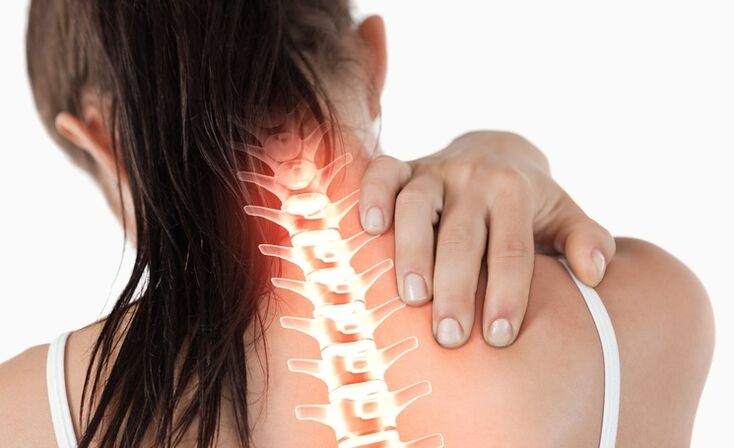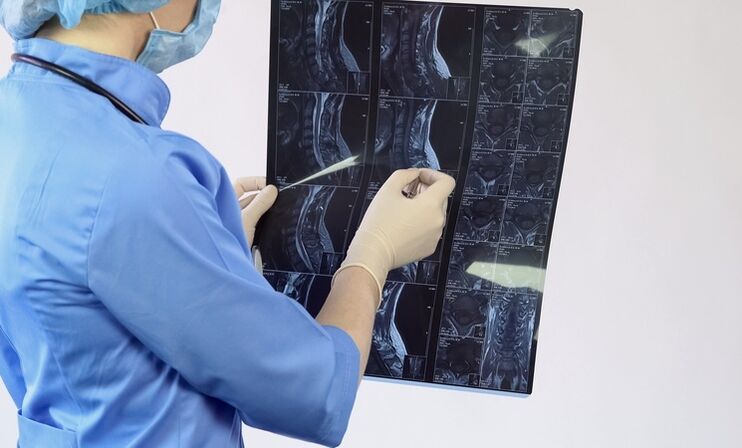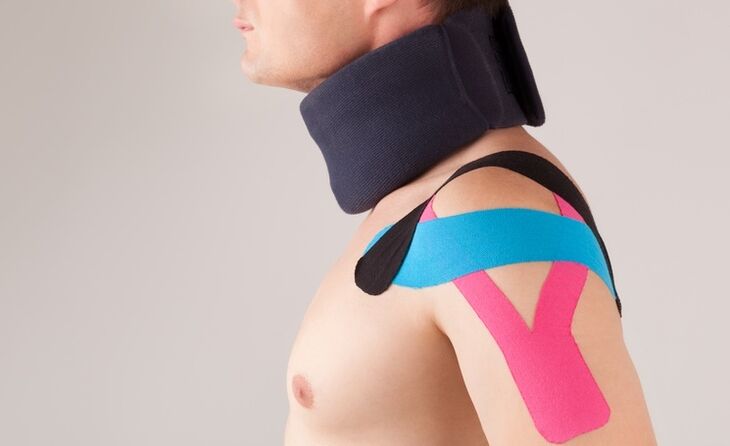As we age, we are more likely to experience pain and fatigue in the neck area. These symptoms can hide the diagnosis of osteochondrosis. Why is it evolving? What treatment methods are there? Is it possible to deal with the disease at home? We asked the doctors these questions.

Osteochondrosis is a chronic degenerative disease of the spine. It is caused by natural aging processes, such as the appearance of gray hair.
In medicine, osteochondrosis refers to various diseases. In the English-language literature, the term osteochondrosis is rare and refers to damage to the bones of children and adolescents during growth due to impaired blood supply. In local literature, osteochondrosis refers to degenerative-dystrophic damage to the intervertebral disc and other parts of the spine. It is characteristic of the elderly and occurs in almost every person.
Causes of osteochondrosis
Neurologists identify several main reasons for the development of the disease:
- low physical activity,
- predisposition to the disease,
- increased static and dynamic loads,
- disturbed metabolism,
- unhealthy diet
- hormonal disorders,
- bad posture
- stress.
Symptoms of cervical osteochondrosis

The most common symptoms of osteochondrosis include reflex, myoadaptive and compression pain syndromes. Let's look at each of them in more detail:
Reflex syndrome
This is due to excessive stress on the nerve endings in the intervertebral disc. Nerve impulses enter the deep and superficial muscles of the back, resulting in pain and a feeling of tension.
The reflex syndrome is characterized by pain in the neck, which increases with each movement of the head. It may not have a clear localization and may be felt in the arms or legs.
Myoadaptive syndrome
It occurs due to muscle overstrain and manifests itself in the form of muscle spasms. It develops during regular and intense physical activity, as well as in cases where healthy muscles take over the function of the affected ones.
The pain in myoadaptive syndrome is localized in trigger points - seals in the spasm area. Symptoms include nausea, headache and insomnia.
Compression syndrome
Due to osteochondrosis, the cartilage and bones of the spine are displaced, which leads to pressure on the nerve endings. Compression syndrome is characterized by the impact of a pathological structure on the spinal roots, spinal cord or any vessel.
Compression syndrome includes 3 vertebral artery syndromes:
- Radiculopathy - radicular syndrome;
- Myelopathy - spinal syndrome;
- Neurovascular syndrome.
Atradicular syndromethe pain is pronounced and is accompanied by clear sensory disturbances in the area of the affected spinal nerve root. Neck pain is often worse at night. Movement disorders may occur, such as muscle weakness and absence of one or more reflexes.
Atspinal syndromethe spinal canal compresses the spinal cord - this happens when the vertebrae are displaced or broken. Symptoms include pain of varying intensity. The sensitivity of the hands and feet decreases, stiffness appears.
Vertebral artery syndromedevelops when its lumen narrows, especially if it is compressed by bony structures. This syndrome is characterized by neck pain, headache, loss of coordination and balance, vertigo, hearing and visual impairment.
There is another syndrome of osteochondrosis, the symptoms of which are often associated with heart disease - this iscardiac syndrome.
It occurs due to damage to the cervical and upper thoracic spine, is characterized by pain in the heart area, imitates or deepens existing changes in the heart muscle and blood vessels. Unlike "heart" pain, it has no clear connection with eating, physical or emotional stress. The pain occurs or intensifies during movements, with forced inhalation, coughing, sneezing. Cardiac syndrome can affect blood pressure and heart rate.
The presence of symptoms of cardiac syndrome requires careful diagnosis of the cardiovascular system and the gastrointestinal tract.
How does osteochondrosis develop?

There are 4 stages of the disease:
- Stage 1- there is instability of the vertebrae, their displacement and violation of the cervical lordosis - the curvature of the spine protruding forward.
Stage 1 symptoms are mild. One may notice that the neck starts to hurt more often and gets tired faster.
- Stages 2 and 3— the intervertebral space decreases and the vertebrae are compressed. At these stages, protrusions and intervertebral hernias appear, as well as anterior bone growths - osteophytes.
The second and third stages differ in the severity of these changes. The third stage is characterized by rupture of the fibrous ring and development of herniation of the intervertebral disc.
- Stage 4- the appearance of posterior osteophytes, which threaten the integrity of the spinal cord. The patient's coordination is impaired and frequent dizziness occurs. At this stage, irreversible consequences leading to disability appear.
The diagnosis of osteochondrosis is based on X-ray diagnostics, MRI or CT studies. All of the above syndromes, as well as many others, are complications of osteochondrosis.
Treatment of osteochondrosis at home

With the development of a reflex syndrome accompanied by local pain and limited mobility,cervical osteochondrosis can be treated at home. The patient needs rest, lack of physical and static load for 3-5 days, after which the load volume is increased individually. In the acute period, pain should be reduced by taking local anesthetic gels and patches, as well as taking non-steroidal anti-inflammatory drugs in combination with vitamins of group B. Drugs that improve microcirculation in the affected spinal motor segment are recommended.
After reducing the pain syndrome and normalizing motor functions, restorative treatment methods can be used: exercise therapy, massage, manual and physiotherapy.
Non-drug treatment methods can be more effective due to the direct impact on and work with certain affected muscles.
In case of numbness, tingling, difficulty in movement, dizziness, headache and other symptoms that go beyond the reflex syndrome, you should consult a doctor for diagnosis and determining the correct treatment tactics.
surgery
The decision to surgically treat cervical osteochondrosis depends on many factors. Neurologists identify several criteria that can be a reason for surgery:
- The spinal cord is compressed by a hernia, displaced vertebra, osteophyte or other pathological formations.
- The intense pain syndrome lasts for a long time.
- Drug and physiotherapy treatment does not give results for more than 3 months.
In case of hernial protrusion, decompression is performed by removing the hernia; in case of displacement of the vertebra - fixation with a metal structure; if we talk about osteophyte complications - bone growths are removed.
Most spinal surgeries performed are traumatic and do not guarantee improvement. Deterioration of well-being and intensification of pain in adjacent spinal motor segments can often occur, so spine surgery is a last resort when the disease is severe and there are no other treatment approaches.
Prevention of osteochondrosis

Prevention of cervical osteochondrosis and neck pain includes normalization of working and living conditions. It is important to avoid keeping your neck bent for long periods of time. You need to strengthen and stretch your neck muscles and increase its mobility through exercise.
Anotheran effective way to prevent the progression of osteochondrosis is proper nutritionhigh protein, healthy fats and collagen-rich foods. It is recommended to reduce the amount of "fast" carbohydrates consumed, as well as to compensate for the lack of trace elements and vitamins.
Proper proper sleep, lack of stress and active physical activity are important: cardio, regular exercise therapy, pilates, yoga, stretching.
The development of osteochondrosis is related to the natural aging of our body - almost all people are susceptible to the disease. Prevention of osteochondrosis, as well as monitoring by specialists, will help your spine stay healthy for longer.



















